The Role of Healthcare Analytics in Reducing Readmissions and Enhancing Value-Based Care
NextGen Invent offers Agentic AI enabled healthcare analytics software services to overcome challenges like fragmented data, high costs, and inefficiencies. This blog explores the necessity of adopting healthcare analytics, showcasing its benefits such as early diagnosis, faster drug discovery, smarter decisions, risk prevention, and improved patient outcomes.
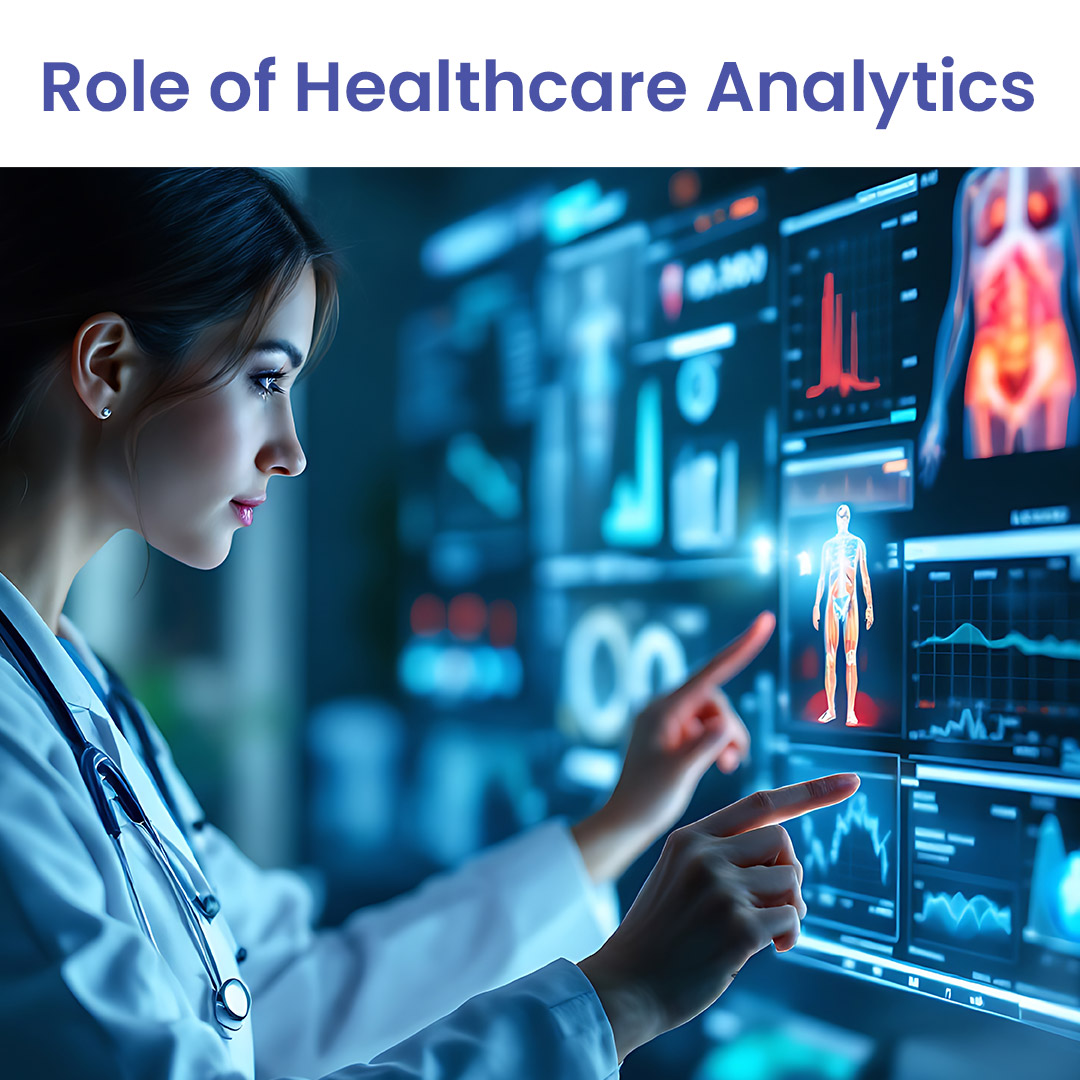
Cut Rising Readmission Costs with Healthcare Analytics Solutions That Improve Patient Outcomes and Care Efficiency

“The AI in the healthcare analytics industry is experiencing rapid growth, driven by the rising need for real-time insights, predictive modeling, and clinical decision support across healthcare systems. Increasing adoption of supporting applications of electronic health records (EHRs) such as patient outreach, population health, clinical decision support, growing healthcare data volumes, and the push toward value-based care are fueling demand for AI-powered analytics to improve patient outcomes, reduce costs, and enhance operational efficiency.”– Grand View Research
The Strategic Impact of Healthcare Analytics in Modern Care
Is it possible for big data to save lives? It surely can, according to proponents of the new discipline of health care analytics. In numerous industries, big data analytics is changing how businesses operate. However, since improved health care analytics can completely transform patient care, the influence might be greatest in the medical area. Numerous facets of healthcare are already benefiting from big data, including:
- Optimized Staffing Efficiency
- Telemedicine Innovations
- Real-Time Health Monitoring
- Stronger Patient Engagement
From Insights to Impact: How Does Healthcare Analytics Transform Patient Care
Every day, actual patient scenarios serve as examples of the power of health care analytics. These are only a few of the numerous ways it has been applied in medical procedures lately.
- Streamlining PTSD Diagnosis: Nearly 8 million Americans suffer from post-traumatic stress disorder (PTSD), yet getting diagnosed and starting life-changing treatment can take a lot of time, and many PTSD patients don’t have time to squander. By removing some of the screening questions, some doctors have been able to expedite the diagnosis process through machine learning. A group from the Boston University School of Public Health and the VA Boston Healthcare System developed a machine learning model that discovered how well various diagnostic phrases and inquiries predicted the diagnosis of PTSD.
- Improving X-Ray/Imaging Screening: In the past, diagnosing a patient required a radiologist or other medical professional to read medical images. However, AI and machine learning can now scan and analyze X-rays and other imaging results in a quarter of the time and determine expected results. Machine learning solutions can compare individual images to previous scans and determine the most likely diagnosis by using hundreds of thousands of X-rays and other diagnostic results.
Why Every Healthcare Organization Needs Analytics Software
The healthcare system in the United States is characterized by fierce rivalry among a growingly integrated network of payers, health systems, life sciences companies, and digital health providers. In addition to clinical results and financial effectiveness, these organizations compete on patient experience, care accessibility, and service delivery innovation.
However, of all the industries, the regulatory environment is one of the most complicated. High stakes are introduced for data governance, billing procedures, digital communications, and value-based care reporting by HIPAA, HITECH, CMS regulations, and changing state-level obligations.
Platforms for healthcare analytics are crucial in this setting for making data-driven, well-informed decisions.
These tools facilitate the unification of disparate datasets from clinical, financial, and engagement systems. It allows management to assess performance, spot irregularities, uncover areas for development, and maintain compliance with regulations.
Data Analytics Adoption Supporting Provider Success
Provider businesses usually require more centralized capabilities, even if data science, when combined with AI and ML technology, offers a wealth of analysis potential. Data analytics becomes more approachable and practical when it is based on clinical, operational, or business goals.
44% of hospitals have created a data governance or analytics strategy. The effectiveness and efficiency of healthcare workflows are most affected by data analytics, according to other studies. More than 30% of businesses are now putting a plan in place to include data analytics into their clinical workflows, and 61% say they are still in the planning stage, indicating that there is still opportunity for them to optimize the benefits of data analytics.
According to a HIMSS Analytics survey, healthcare organizations most frequently use data analytics in the following ways:
- 90% leverage analytics in clinical areas
- 85% apply analytics in financial areas
- 77.3% utilize analytics in operational areas
Healthcare Analytics Benefits for Smarter, Safer Decisions
The days of stale information and stagnant dashboards are over. AI-powered analytics that enable you to delve into data and react to real-time changes in minutes rather than days or weeks are necessary to meet today’s healthcare concerns. Here are a few ways that healthcare analytics could shift your business’s operations:
1. Enable Early & Accurate Diagnosis
The promise of healthcare data analytics technologies is particularly enticing in this regard. By evaluating past and present patient health data, individuals who are more susceptible to specific diseases can be identified. This is particularly beneficial for those who may develop chronic illnesses because prevention is simpler than treatment.
Additionally, because preventative care is less expensive, it helps payers and providers. Advanced healthcare analytics software created for clinical prediction and prevention makes such insights possible.
Check our Success Story: Early Diagnostics Using Clinical and Molecular Data
2. Boost Administrative Efficiency & Reduce Costs
Healthcare analytics software streamlines administrative workflows by automating data management, resource allocation, and reporting processes.
By identifying inefficiencies and optimizing operational tasks, it reduces administrative burden, lowers operational costs, and enables healthcare organizations to allocate more resources toward patient care, improving overall organizational efficiency.
3. Detecting Risks Early On
The healthcare sector has faced tremendous challenges over the past five years, but they have also forced providers to see the value of being data driven. Healthcare software allows clinicians to keep an eye on patient data in real time and even identify high-risk patients using predictive models.
For example, you might suggest testing to determine risk factors for a patient who has a family history of cardiovascular issues. If preliminary screenings indicate high blood pressure and cholesterol, you can use predictive analytics to assess the patient’s risk of future cardiovascular events.
4. Accelerating Data Storytelling for Research
Data has long been vital to healthcare and life sciences, but modern analytics tools now let users turn raw medical data into interactive visualizations.
Regardless of expertise, professionals can uncover actionable insights, understand patient challenges, and advance medical research, shifting from static, context-free reports to dynamic, data-driven decision-making that enhances care and drives innovation.
5. Personalizing Care Plans for Patients
Patients today expect convenient, clear, and individualized care plans from their healthcare providers. According to a McKinsey survey, patients who are satisfied with their care are 28% less likely to change providers. The true query, therefore, becomes: How do you develop individualized treatment programs for your patients?
Utilize healthcare analytics and Generative AI. Medical practitioners can develop a health profile by analyzing patient data holistically, including vital signs, test results, medical history, and lifestyle factors, because of this potent combination. The optimal treatment regimens and fewer potentially harmful drug interactions for each patient are determined by doctors with the use of these insights, which take the guesswork out of the equation.
Transform Chronic Disease Management Using Predictive Analytics to Prevent Complications and Lower Hospital Readmissions
Driving Patient Outcomes and ROI with Healthcare Analytics Use Cases
Healthcare analytics leverages advanced data processing, predictive modeling, and AI-driven insights to optimize clinical workflows, improve patient outcomes, and maximize ROI. By integrating structured and unstructured data across systems, organizations can make informed decisions. The following six use cases highlight practical applications.
 1. Ensuring Patient Data Security
1. Ensuring Patient Data Security
Given the sensitive nature of patient data and regulatory regulations such as HIPAA, data security is essential in healthcare analytics. The following are some ways that utilizing analytics can assist businesses in proactively defending against security threats:
- Tracking variations in network traffic and identifying questionable cyberattack activity: Healthcare analytics can swiftly identify anomalous patterns that can indicate threats by examining user behavior and real-time network data. Timely intervention is made possible by these insights, which assist in identifying suspicious system interactions, anomalous data transfers, and unauthorized access.
- Real-time risk score calculations for individual transactions: Not every transaction in the healthcare industry is equally risky. Based on several variables, including the sensitivity of the data, the user’s location and device, and past transaction patterns, analytics can assist in assigning real-time risk scores to certain transactions, such as financial or data access activities.
2. Forecasting Patient Loads
Healthcare analytics also assist organizations with forecasting patient loads. Predictive analytics is used to estimate the number of patients who will visit each department at particular times based on seasonal patterns, population health trends, and past clinical data. To ensure that the appropriate number of doctors, nurses, and support personnel are planned during peak periods, hospitals might use healthcare data analytics to forecast patient volumes. This makes it easier:
- Improving Patient Outcomes: Wait times for patients can be decreased, and improved patient outcomes can result from making sure the appropriate resources are accessible when needed. Additionally, by ensuring that sufficient personnel and resources are distributed during public health emergencies, including flu outbreaks, patient load forecasting helps avoid sickness.
- Reducing Unnecessary Labor Costs: By ensuring that medical personnel are accessible during peak hours and preventing overstaffing during slower times, predictive patient volumes assist hospitals in optimizing staffing.
3. Predicting Disease Outcomes & Treatment Plans
Predictive analytics improves health management and treatment efficacy by using patient history, genetics, and previous treatment results to estimate the progression of disease and suggest personalized treatment strategies. This method enables:
- Risk Stratification: Identifies high-risk patients (e.g., those with cardiovascular conditions) to prioritize monitoring and proactive care.
- Personalized Treatment Planning: Customizes care pathways based on individual patient profiles for improved health outcomes.
- Disease Progression Forecasting: Anticipates potential complications in chronic conditions such as diabetes, enabling timely interventions.
4. Monitoring Real-time Healthcare Data
Utilizing healthcare analytics solutions, organizations can enhance patient outcomes and operational efficiency by continuously monitoring patient conditions and resources. Real-time data analysis continuously monitors patient data at home and in the hospital, preventing bad occurrences. Healthcare professionals can identify significant changes in patient situations with the use of health informatics, enabling quicker intervention.
Whether they are at home or in the hospital, many patients in today’s healthcare system use wearables or other electronic devices to monitor their vital signs. Through ongoing analysis of this data, medical professionals can:
- Early Critical Event Detection: Alerts care teams to anomalies in patient data (e.g., sudden oxygen desaturation) to prevent emergencies.
- Remote Patient Monitoring: Continuously tracks vital signs and detects irregularities such as arrhythmias or oxygen level fluctuations requiring immediate intervention.
- Intelligent Care Prioritization: Delivers real-time insights to clinicians, enabling faster response times and optimized allocation of medical staff.
5. Advanced Population Health Intelligence for Preventive Care
Advanced population health intelligence for preventive care leverages predictive analytics, machine learning models, and multi-source data integration to proactively manage community health. By analyzing historical medical records, claims data, social determinants of health, and utilization patterns, platforms generate population risk stratification scores that highlight individuals most susceptible to chronic diseases.
Predictive algorithms forecast disease onset, progression, and potential cost drivers, enabling healthcare organizations to design preventive programs targeting high-risk cohorts. Care teams receive actionable insights to optimize outreach, personalize interventions, and allocate resources effectively. This intelligence-driven approach reduces avoidable hospitalizations, enhances patient outcomes, and supports value-based care by aligning prevention with long-term cost efficiency.
6. End-to-End Enablement of Value-Based Care Models
From patient onboarding and attribution to contract reconciliation, intelligent platforms manage care coordination, risk adjustment, quality reporting, and incentive alignment. Agentic AI orchestrates workflows by dynamically optimizing provider tasks, tracking performance against clinical and contractual benchmarks, and forecasting financial outcomes under different risk scenarios.
Predictive models identify care gaps and stratify patient populations, while automated reporting ensures compliance with regulatory and payer requirements. This comprehensive approach enables healthcare organizations to scale value-based initiatives, improve patient outcomes, and achieve sustainable financial performance.
Transform Clinical Documentation with Agentic AI To Align Records And ICD-10 Coding for Greater Efficiency
Key Trends Transforming Healthcare Analytics in 2025 and Beyond
The healthcare analytics industry continues to develop quickly in spite of its strict regulations and, in certain situations, cautious approach to change. Innovations are being fueled by changes in care delivery methods, technological advancements, and market forces. In the upcoming years, the following trends will influence the industry:
- Emphasis on Data Interoperability & Patient-Centric Care: It’s becoming crucial for EHRs, claims systems, and patient engagement platforms to transmit data seamlessly. More thorough patient views are supported by improved interoperability, which frees up analytics to concentrate on results and individualized treatment plans.
- Real-World Evidence (RWE) for Outcome-Based Models: RWE is being used more and more by payers and providers to assess the efficacy of treatments, negotiate value-based contracts, and show therapeutic impact in practical contexts.
- Internet of Medical Things (IoMT) & Wearables: Patient data is being continuously generated by the expansion of wearable health trackers and connected medical devices. Early health issue detection, tailored therapies, and proactive monitoring are made possible by integrating this data into analytics platforms.
- Privacy-First AI Environments: Healthcare businesses are giving private, compliant AI deployments that operate inside their own infrastructure top priority as AI adoption picks up speed. This ensures that sensitive data never leaves their regulated environment.
Conclusion
In summary, the healthcare sector is experiencing a profound shift driven by data, and AI enabled healthcare analytics software services are at the center of this transformation. By leveraging advanced algorithms and predictive modeling, healthcare providers can move toward proactive, patient-centered, and cost-efficient care. From precision medicine to fraud prevention, intelligent analytics empowers organizations to enhance clinical efficiency, reduce readmissions, and deliver measurable improvements in value-based care.
At the same time, digital health software development services are enabling providers and payers to modernize operations, strengthen financial management, and streamline administrative workflows. With customized solutions, healthcare organizations can unlock the full potential of their data, drive innovation, and shape a healthier, more connected future.
Frequently Asked Questions About Healthcare Analytics Software
Related Blogs
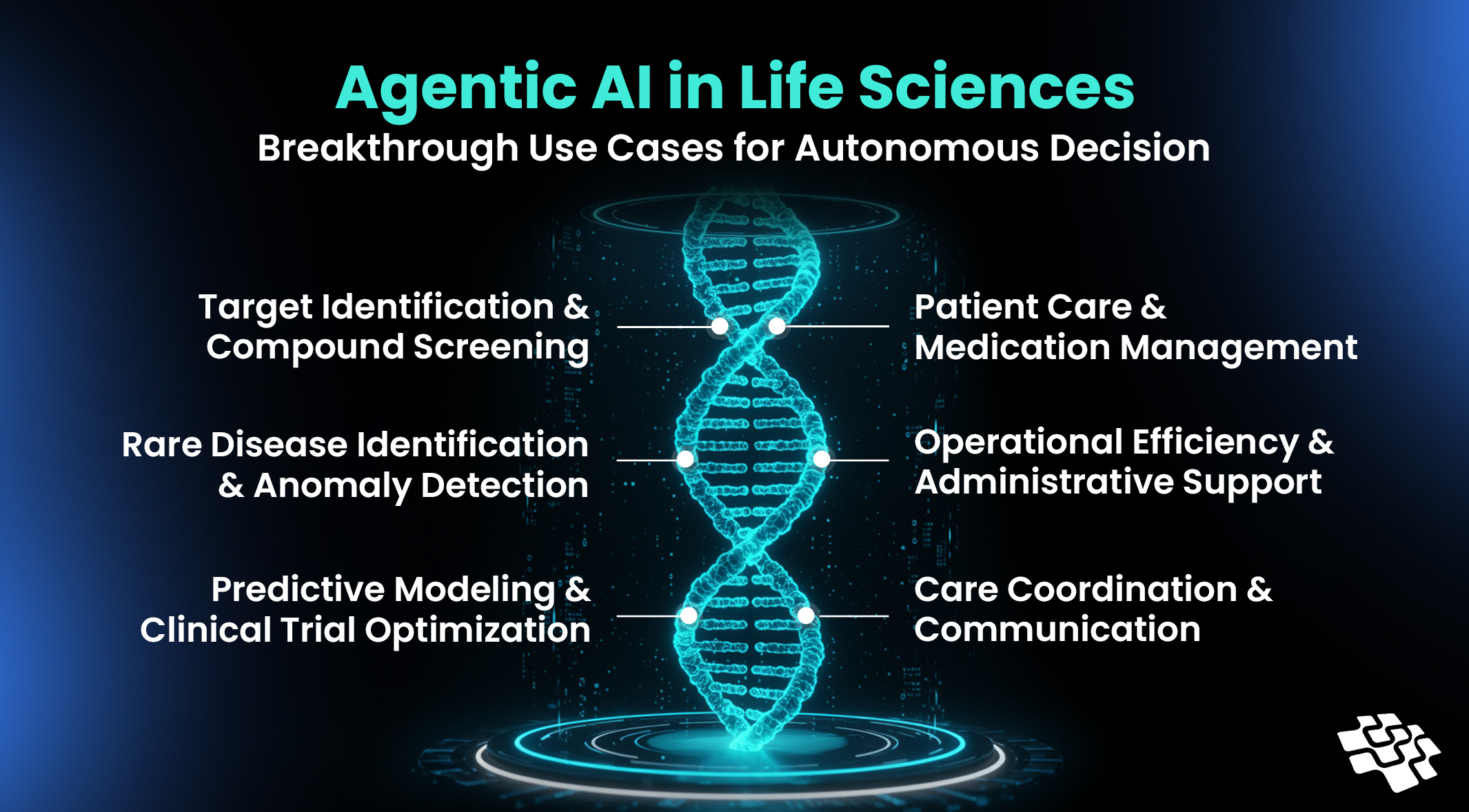
From Trial Delays to Smart Decisions: How Agentic AI In Life Sciences Is Redefining Innovation
This blog will examine the primary challenges that pharmaceutical businesses must overcome to comprehend how agentic AI in Life Sciences industry might help them maximize efficiency...
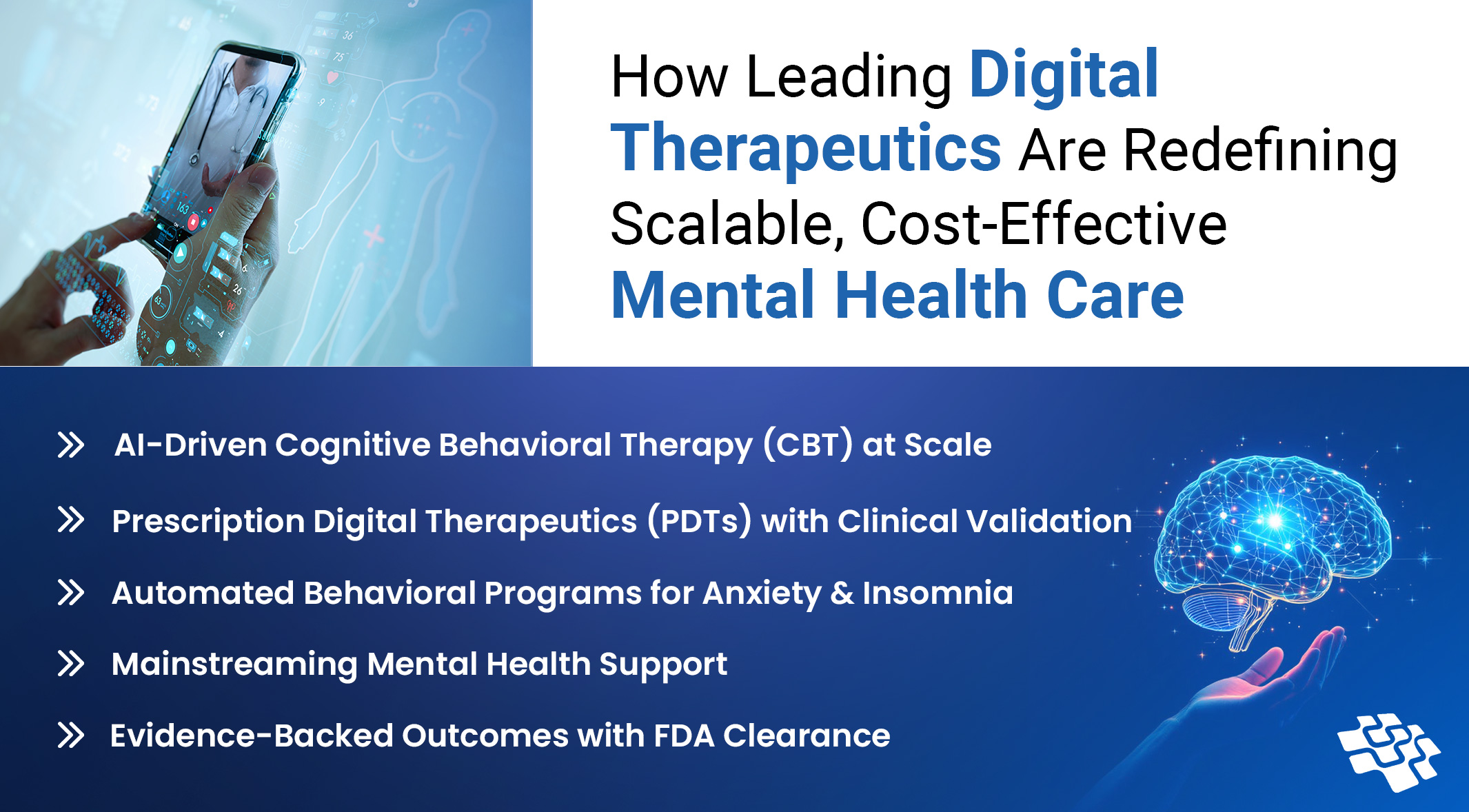
Digital Therapeutics for Mental Health - How Technology is Shaping the Future Well-Being
The field of digital mental health has expanded significantly in the last ten years, covering a wide range of areas such as digital therapeutics for mental health, personalized medicine, telehealth and telemedicine, and mobile health (mHealth).
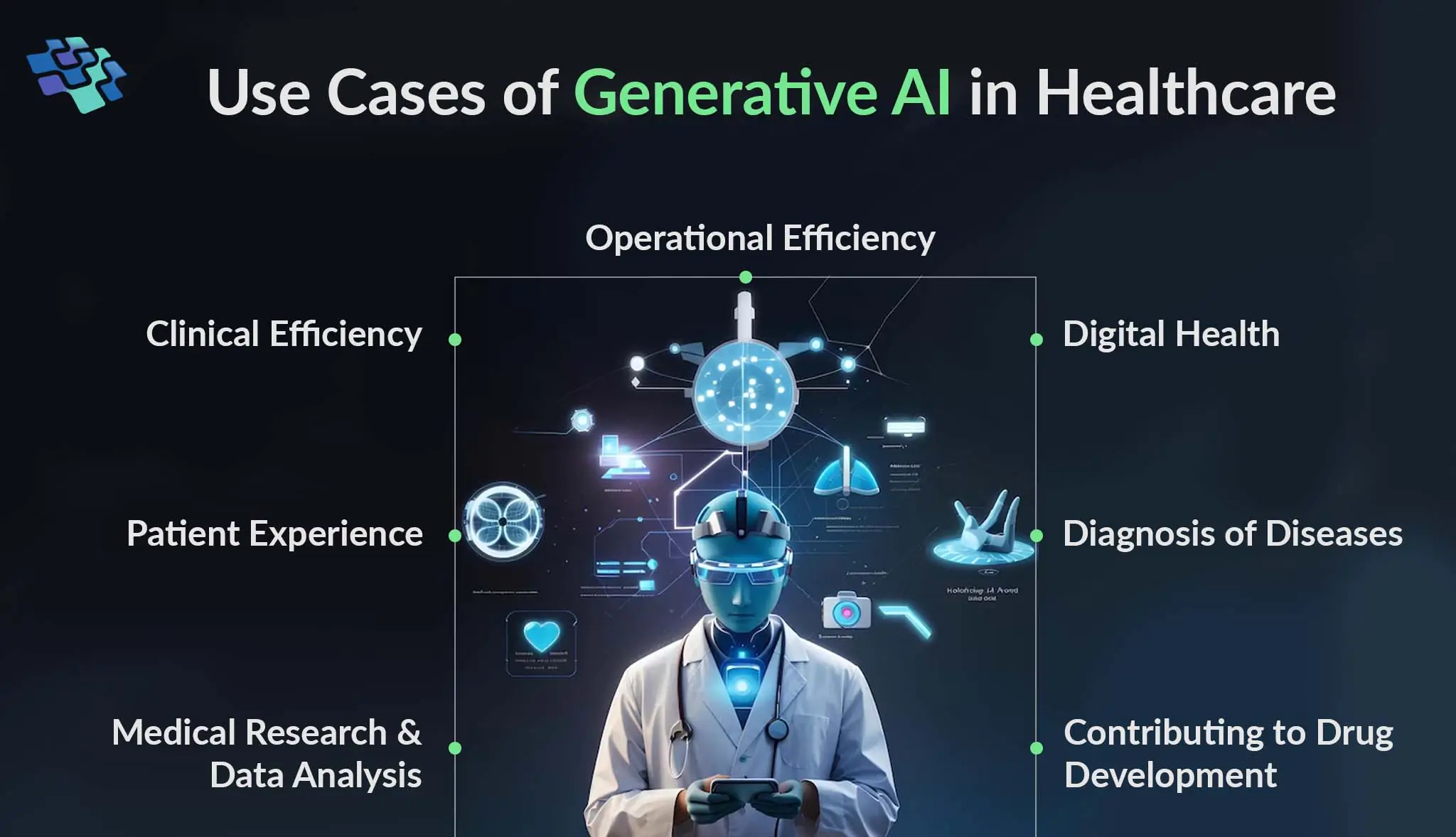
7 Most Crucial Use Cases of Generative AI in Healthcare
Generative AI in healthcare is taking the medical world by storm, offering groundbreaking solutions left and right. Picture this: by 2032, the global Generative AI market is set to hit a whopping $118.06 billion!
Stay In the Know
Get Latest updates and industry insights every month.
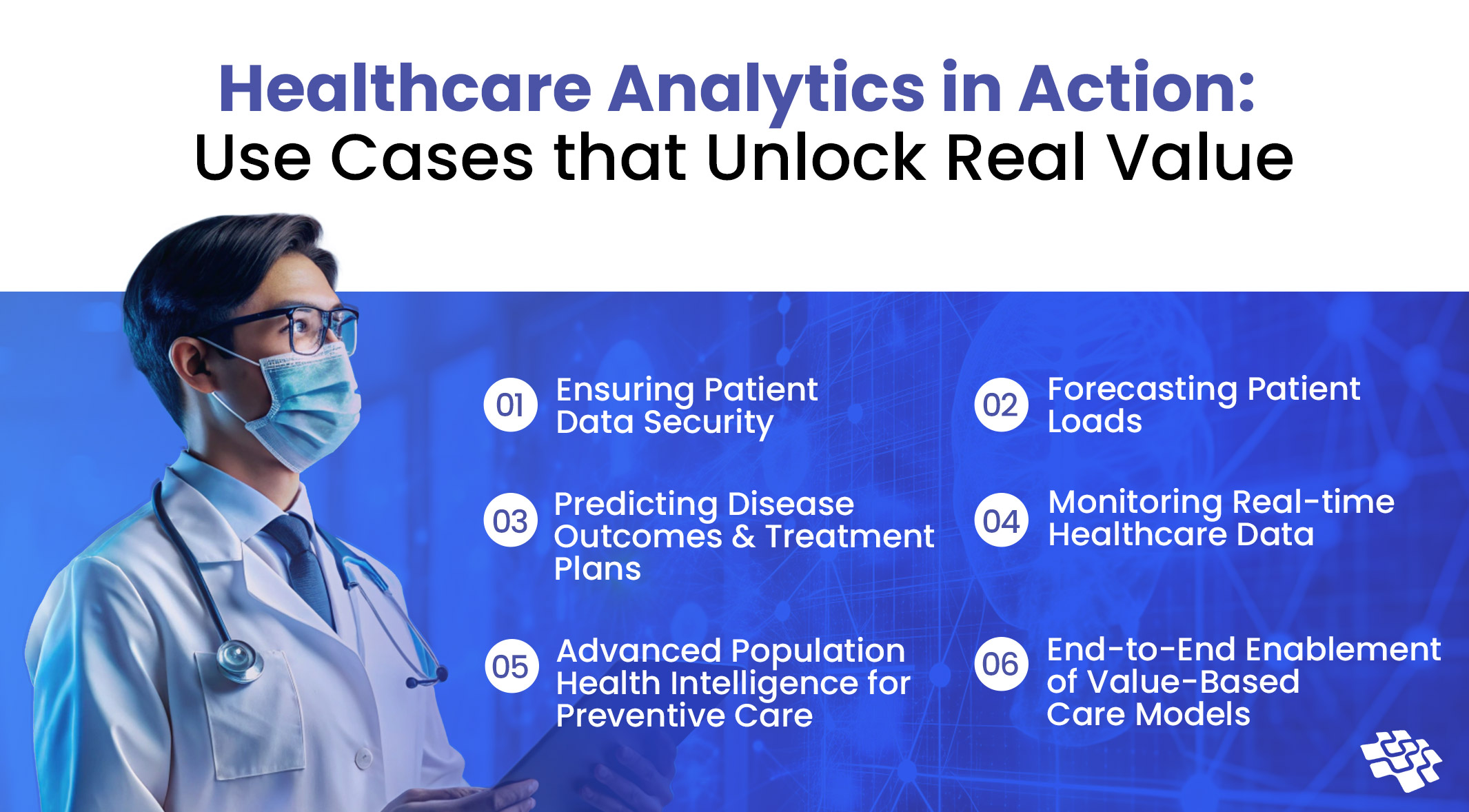 1. Ensuring Patient Data Security
1. Ensuring Patient Data Security